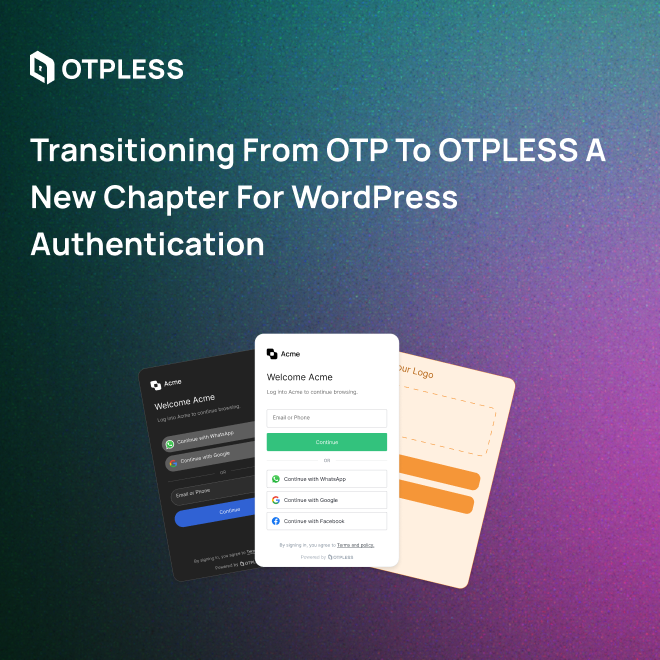Introduction
In today’s fast-paced digital world, user authentication plays a vital role in ensuring the security and seamless experience of website visitors and application users. Traditionally, one-time passwords (OTPs) have been widely used as a means to authenticate users. However, OTPs can often be cumbersome and time-consuming, leading to user frustration and potential security vulnerabilities. That’s where OTPLESS’s innovative WhatsApp Login feature comes into the picture, offering a new chapter in WordPress authentication.
Introducing OTPLESS’s WhatsApp Login
With the goal of simplifying the login process and enhancing security, OTPLESS has developed an ingenious solution called “WhatsApp Login.” This groundbreaking feature allows users to log in to websites or applications using their WhatsApp accounts instead of relying on traditional OTPs. By leveraging the popularity and widespread usage of WhatsApp, OTPLESS has revolutionized the authentication experience for WordPress users.
The Unique Advantage of OTPLESS’s WhatsApp Login
What sets OTPLESS’s WhatsApp Login apart from conventional authentication methods is its seamless and user-friendly approach. Unlike OTP-based logins that require users to enter their phone numbers and one-time passwords, WhatsApp Login eliminates these steps entirely. Users can now enjoy a hassle-free login experience without the need to memorize or retrieve OTPs.
Benefits of WhatsApp Login for WordPress Authentication
- Enhanced Security: By saying goodbye to OTPs, WordPress site owners can protect their users from potential account takeovers. OTPs can be intercepted or stolen, but with WhatsApp Login, the authentication process becomes more secure and resistant to unauthorized access.
- Improved User Experience: OTPLESS’s WhatsApp Login prioritizes user convenience and satisfaction. The process of phone verification becomes seamless, as users can log in or sign up using their WhatsApp accounts without the need for OTPs. This frictionless experience leads to higher user engagement and retention rates.
Use Cases of WhatsApp Login for WordPress
- Sign-up Process: When a user visits your website or app for the first time and wishes to create an account, WhatsApp Login simplifies the sign-up process. Instead of entering their phone number and waiting for an OTP, users can quickly verify their WhatsApp number, providing a smoother onboarding experience.
- Sign-in Process: Returning users who want to access their existing accounts can benefit from WhatsApp Login as well. By clicking on the “WhatsApp Login” button, users can effortlessly log in without the hassle of retrieving and entering OTPs. This saves time and reduces friction, leading to improved user satisfaction.
How WhatsApp Login Works
To understand how WhatsApp Login seamlessly integrates with WordPress, let’s break down the process:
- User Interaction: On the login page of your WordPress site, users will find the prominently displayed “WhatsApp Login” button.
- WhatsApp Message: When users click the button, a pre-filled WhatsApp message is automatically generated and sent.
- Verification Link: In response to the WhatsApp message, users receive a verification link from your WordPress site. This link acts as proof of authentication.
- Redirect to Website/App: Once users click the verification link, they are seamlessly redirected back to your website or app, gaining access to their accounts or completing the sign-up process.
OTPLESS: Empowering WordPress Authentication
As an industry leader in user authentication, OTPLESS aims to provide a secure, efficient, and cost-effective solution. With OTPLESS’s WhatsApp Login, you can revolutionize your WordPress site’s authentication process, putting user experience and security at the forefront.
Moreover, OTPLESS’s WhatsApp Login is not only a game-changer in terms of its functionality but also a budget-friendly choice. By offering the service as a lifetime free solution, OTPLESS ensures that even small businesses and individuals can leverage the advantages of WhatsApp Login without breaking the bank.

